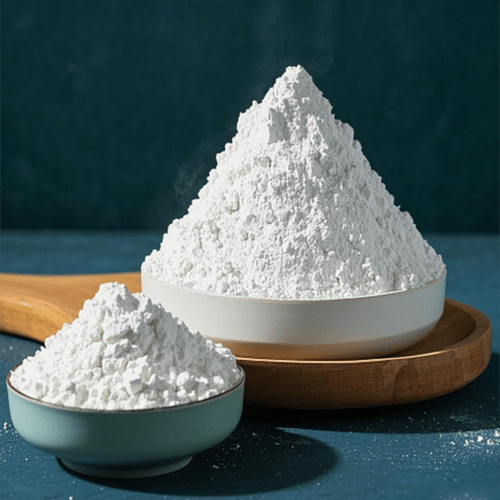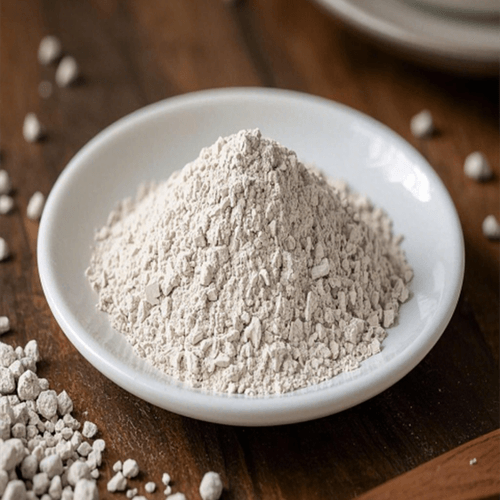
Kaolin
Characteristics of Kaolin
- Color and Appearance
When pure, it is white and fine in color, without luster. When containing impurities, it can have colors such as gray, yellow, and brown. In terms of appearance, it can be in the form of loose soil blocks or dense rock blocks.
- Physical Properties
The density ranges from 2.54 to 2.60 g/cm³, the melting point is approximately 1785℃, and the Mohs hardness is between 1 and 2.5. It has good dispersibility, cohesiveness, electrical insulation, ion exchangeability, plasticity, and a relatively high refractoriness. The wet soil (with a water content of 20%-35%) can be molded into various shapes without breaking, and it can remain unchanged for a long time after drying.
- Chemical Properties
It has good electrical insulation, ion exchangeability, and a relatively high refractoriness. It has good chemical stability and strong acid resistance, but poor alkali resistance.
Chemical name: Anhydrous aluminum silicate
Physical form: White powder
CAS NO.: 92704-41-1
Application Scope
Ceramic Industry: It is the main raw material in the ceramic industry and is used for ceramic body materials and glazes. It can introduce Al₂O₃, which is beneficial to the formation of mullite, improve the chemical stability and sintering strength of ceramics, endow porcelain clay and porcelain glaze with good formability, and make ceramic products have a certain degree of whiteness.
Paper Industry: It is used for the filling and coating of paper. When used for filling, it is mixed with cellulose fibers to form the main body of the paper, endowing the paper with color, opacity, and printability. In the coating process, it is applied to the surface of the paper together with the adhesive, providing gloss, color, high opacity, and better printing adaptability.

Rubber and Plastics Industry: Kaolin with lamellar crystals, high whiteness, and high fineness can be used as a filler in rubber. It can enhance the mechanical strength, abrasion resistance, and chemical stability of rubber, while reducing the cost of rubber. When used as an additive in plastics, it can make the surface of plastics smooth, which is beneficial for polishing. It can also enhance the chemical corrosion resistance, making the plastics more durable.


Refractory Materials: It can be used as refractory materials in the metallurgical industry and refractory materials in the high-grade glass manufacturing industry. For example, it is used to make refractory bricks, high-magnesium-aluminum bricks, lining bricks for various smelting furnaces and hot blast stoves, etc. High-quality kaolin is also a raw material for manufacturing mullite refractory materials.
In the chemical industry field: It can be used as a component of petroleum drilling mud and also for the artificial manufacture of molecular sieves, which are widely applied in aspects such as the chemical industry, petroleum refining, and catalysis. In addition, kaolin can be used in the production of chemical products such as coatings and adhesives, playing the roles of filling and reinforcement.
In the Cosmetics and Pharmaceutical Fields: Calcined kaolin can be used as an additive in cosmetics. It enhances the oil and water absorption of cosmetics, improves the affinity between cosmetics and the skin, and boosts the emollient ability. It can also be used to improve the absorption capacity of face powder, control its expansibility, and enhance skin adhesion, etc. In the pharmaceutical industry, kaolin can serve as a carrier and adsorbent for drugs.




